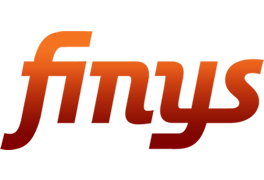The Art in Artificial Intelligence
In the December edition of Best’s Review, we came across an article titled, “Underwriting AI: Is It Aligned With Insurance Industry’s Best Interests?” It’s fair to say it left us feeling a little queasy, especially this part:
The rapid advancement of artificial intelligence is eliciting a wide range of predictions for its impact, from solutions to our most pressing problems like cancer and climate change to the availability of omniscient personal assistants to widespread misinformation and the disempowerment of humanity. These predictions are on the minds of casualty underwriters as they review a growing number of submissions from businesses claiming to be powered by AI. Perhaps no plaintiffs will be around to collect damages, but no one wants to have underwritten the AI application responsible for the disempowerment of humanity. While the artificial general intelligence that could precipitate an AI apocalypse is likely years away, it’s reasonable to be concerned about the harm that AI systems can cause today.
Well, now. There’s nothing like a good dystopian nightmare to keep us from getting too infatuated with technology, we alway say.
What’s Possible
Relying on AI for casualty underwriting reminds us of some articles we’ve read recently about using AI to detect plagiarism. One from semrush.com says:
Created in response to growing cases of plagiarism in the academic world, plagiarism-checking tools compare text against large databases of existing web content, as well as research papers, magazines, journals, and publications, to see if there are any matches between them.
Another from from copyleaks.com says you can:
Check for plagiarism using advanced AI to detect the slightest variations within the text, including hidden and manipulated characters, paraphrasing, and AI-generated content.
Yet another, this one from plagium.com says:
Plagium Originality AI Detector is a GPT-based plagiarism detection tool designed specifically to identify AI-generated text that has been copied or paraphrased from other sources … The detector is multilingual and can identify plagiarism in text written in various languages.
We get all that. But the same questions apply to AI for casualty underwriting as apply to all those plagiarism checkers.
What’s Necessary
Before we fall unconditionally in love with AI, let’s at least tap the breaks and use our slightly slower pace to ask these question, regardless of whether we’re talking about plagiarism-detection or casualty underwriting:
- What’s “the truth”?
- Who gets to define it?
- What are the sources?
- How current are the sources?
- Who maintains them?
- Who programmed the application?
- Most important, the industry notwithstanding, what’s in your company’s best interest?
Do those questions mean we’re skeptical? We hope so. Do we believe in the potential of AI to be a constructive tool for the insurance industry and beyond? Yes. But putting AI to work in any capacity — like choosing a software vendor or checking out your daughter’s boyfriend — requires diligent vetting. If AI — like your software vendor or your daughter’s boyfriend — doesn’t seem like it’s going to behave the way you want it to, you’re better off knowing that before it’s too late. As the saying goes, it’s better to be safe than sorry.
AI may be a science. But making sure it does what you expect it to do is an art.





The article ‘The Art in Artificial Intelligence’ elegantly highlights the nuanced ‘Art and Craft’ of balancing AI’s potential with cautious skepticism. It’s a thoughtful exploration of how AI can be both a boon and a challenge for industries, reflecting careful consideration.